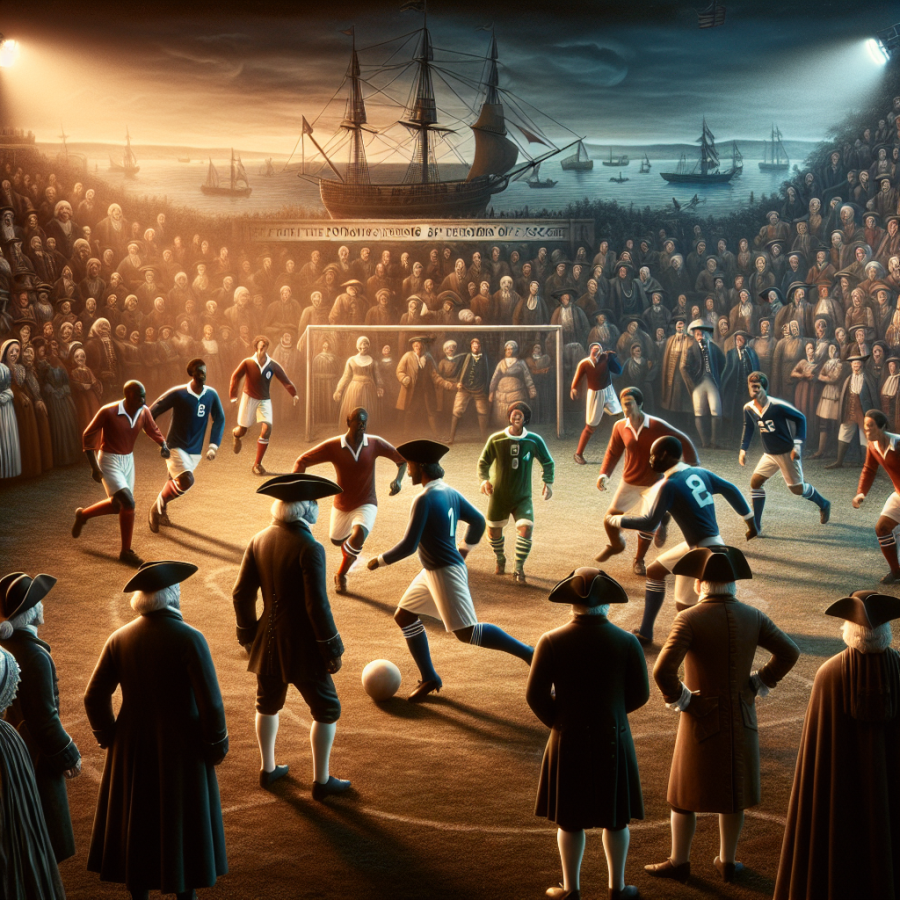Tracing the Origins: Ancient Civilizations and the emergence of Soccer
Ancient civilizations have played an instrumental role in the historical development of various aspects of our society, sports included. In tracing the origins of soccer, otherwise known as football in most parts of the world, one needs to look far back into antiquity to uncover its true founding.
Predominantly, soccer is believed to have been invented in England, although several other countries lay claim as well. But, the game's historical lineage likely takes it far beyond England, back to the times of ancient civilizations. Innumerable historical records from multiple civilizations like the Chinese, Egyptians, Greeks, and Romans mention the existence of a soccer-like game being played.
Starting as early as 2500 BC, the Chinese civilization, under the reign of Emperor Huang Ti, played a game called "Tsu Chu". This game involved kicking a leather ball filled with feathers and hair through an opening measuring about 30-40cm in width into a small net fixed onto long bamboo canes. These matches were often part of fertility rites and spiritual ceremonies. The Greeks and Romans also had their versions of soccer, often used to prepare warriors for battle.
In Greece, there was a game called "Episkyros", which the Romans later adapted into their game named "Harpastum". Both these games involved the use of a ball, footwork, and teamwork. They also had minimal rules, and the primary aim was to show strength and tactics. Similarities between these games and modern soccer highlight the ancient foundations of the sport we love today.
Moving into the Middle Ages, soccer-like games continued to be played, but often in violent and chaotic ways. In England, soccer was known as Mob football. Matches often had hundreds of participants and were played between neighboring towns and villages. Players would fight over the ball, aiming to kick it over the boundary marker of their opponent. There were no formal rules to govern the gameplay, leading to potential brutality and disorder.
Via several reformations and the standardization of rules in 19th century England, these informal, chaotic games eventually evolved into the sport we now call soccer or football. The various stages of evolution that transpired through the ages, right from the ancient times to the Middle Ages and finally, the formation of the first Football Association in England, highlight the historical continuum of the sport.
In conclusion, the origins of soccer stretch far beyond medieval England to the ancient civilizations of Greece, Rome, China, and Egypt.
Read also:
Unearthing the Origins: Where Soccer was Invented
The Modernization of Soccer: Codification of Rules and the Establishment of Associations
The progression of soccer from a primitive sport to the world-renowned game we know today can be linked directly to the codification of rules and the establishment of various soccer associations worldwide. This process was not a one-time event but a journey filled with various significant milestones.
The codification of soccer rules did not take place suddenly. Before the 19th century, soccer was played with varying and often contradictory rules, depending on geographical location. The rules were localized, as there was no central governing body or universally accepted guidelines. However, this scenario changed drastically with the advent of modern industrialization.
During the 19th century, the effects of the industrial revolution permeated the sport of soccer. The revolution saw an increase in urbanization, which led to work-settings where people from diverse regions reunited. This diversity led to the clash and confusion of the varying rules in the sport. To bring about standardization and mitigate this confusion, several attempts were made to codify the rules of soccer.
One significant attempt was the Cambridge Rules formulated in 1848 by a group of university students in England. Although the rules gained some popularity, they were not universally accepted, leading to the continuation of localized rules.
The codification process culminated in 1863 when the Football Association (FA) was formed in England. The establishment of the FA marks a significant turning point in soccer history because it resulted in the acceptance of a universally recognized set of rules. The association initially comprised of twelve clubs, all with a shared interest in standardizing soccer rules. The rules formed by this association, often referred to as the "London Rules," received wide acceptance and are the predecessors of today's soccer rules.
After the codification of rules in England, many countries began to establish their own soccer associations. These bodies acted as custodians of the sport within their respective jurisdictions, ensuring that the sport's rules were upheld and further developed in alignment with the FA's guidelines.
In 1886, the International Football Association Board (IFAB) was founded to serve as the final authority on soccer laws. It was formed after a dispute during an international match between England and Scotland. Today, the IFAB is made up of representatives from each of the United Kingdom's football associations (England, Scotland, Wales, and Northern Ireland) and FIFA. It plays a crucial role in making final decisions on amendment proposals to the laws of the game.




